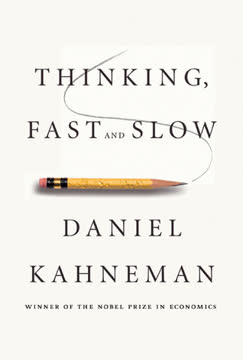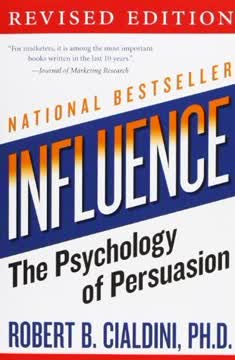Key Takeaways
1. Marketing is the art and science of creating value through successful exchanges
Marketing is the art and science of creating value by designing and managing successful exchanges.
Value creation focus. Marketing aims to create and capture value by facilitating mutually beneficial exchanges between a company and its customers. This involves deeply understanding customer needs and wants, developing offerings that fulfill those needs better than alternatives, and communicating the value proposition effectively. The "art" of marketing draws on creativity and intuition to connect with customers emotionally, while the "science" applies rigorous analysis and testing to optimize results.
Exchange-based view. Successful marketing requires viewing business activities through the lens of value-creating exchanges. This means:
- Identifying all participants in the exchange (customers, company, collaborators)
- Determining what each party values and seeks from the exchange
- Designing offerings and processes that maximize value for all participants
- Measuring and improving the effectiveness of exchanges over time
2. The G-STIC framework guides effective marketing planning and analysis
Marketing planning can be viewed as a process defined by five main steps: setting a goal, developing the strategy, designing the tactics, defining the implementation plan, and identifying the control metrics to measure progress toward the set goal.
Comprehensive planning approach. The G-STIC framework provides a structured method for developing marketing plans:
- Goal: Define clear, measurable objectives
- Strategy: Identify target market and value proposition
- Tactics: Design marketing mix (product, price, place, promotion)
- Implementation: Create action plan and timeline
- Control: Establish metrics to track progress
Iterative process. While presented linearly, marketing planning is an iterative process. Insights gained at later stages often lead to refinement of earlier decisions. The framework serves as both a planning tool and a way to organize the final marketing plan document.
3. Creating customer value is central to developing a compelling value proposition
The key to determining the optimal price is to consider its implications on an offering's value for customers, collaborators, and the company in a broad context that involves all other aspects of the company's strategy and tactics.
Multi-dimensional value. Customer value encompasses functional, psychological, and monetary benefits. A compelling value proposition clearly articulates how an offering delivers superior value across these dimensions compared to alternatives.
Holistic approach. Optimizing customer value requires considering:
- Product/service features and performance
- Brand associations and emotional benefits
- Price and total cost of ownership
- Customer service and support
- Ease of purchase and use
The most effective value propositions align all aspects of the marketing mix to reinforce the core value message.
4. Identifying target customers is crucial for optimizing marketing efforts
A key principle of managing product lines is that each individual offering should be optimized with respect to a particular target segment, such that each offering has its own unique value proposition that fits the needs of a particular customer segment.
Strategic targeting. Effective targeting involves:
- Segmenting the market based on meaningful differences in customer needs
- Evaluating segment attractiveness (size, growth, profitability)
- Assessing company fit/ability to serve each segment
- Selecting target segments that offer the best opportunities
Tailored value propositions. Once target segments are chosen, offerings and marketing approaches should be customized to each segment's specific needs and characteristics. This increases relevance and resonance with customers.
5. Brand management builds intangible assets that drive long-term success
Brand equity is the net present value of the financial benefits derived from the brand.
Strategic brand building. Strong brands create value by:
- Differentiating offerings from competitors
- Commanding price premiums
- Increasing customer loyalty
- Facilitating new product acceptance
- Providing leverage in distribution channels
Brand equity drivers. Key factors in building brand equity include:
- Brand awareness and familiarity
- Perceived quality and reliability
- Strong, favorable, and unique brand associations
- Brand loyalty and repeat purchase
- Brand extensions into new categories
Consistently delivering on the brand promise across all customer touchpoints is crucial for long-term brand equity growth.
6. Pricing strategies balance value creation and value capture
Setting the price is really a decision about value, not just price. Thus, the optimal price is one that, in combination with the other marketing mix variables (product, service, brand, incentives, communication, and distribution), delivers superior value to target customers, the company, and collaborators.
Strategic pricing. Effective pricing strategies consider:
- Customer willingness to pay and price sensitivity
- Competitive pricing and positioning
- Company costs and profit objectives
- Overall marketing strategy and brand positioning
Value-based pricing. Rather than simply marking up costs, value-based pricing sets prices based on the perceived value to customers. This often allows for higher margins while still delivering strong customer value.
Price optimization. Dynamic pricing, tiered pricing, and promotional strategies can help maximize revenue and profitability across customer segments and purchase occasions.
7. Distribution channels deliver value efficiently to target customers
Channels facilitate the value exchange between the company and its customers by delivering the different aspects of the company's offering to its target customers: they deliver the company's products and services, enhance the offering's brand, collect payments, and distribute and process incentives.
Channel strategy. Key distribution decisions include:
- Channel structure (direct vs. indirect)
- Channel intensity (intensive, selective, exclusive)
- Channel member selection and management
- Multichannel integration and conflict management
Omnichannel approach. Today's consumers expect seamless experiences across online and offline touchpoints. Successful companies integrate channels to provide consistent brand experiences and maximize convenience for customers.
8. Integrated marketing communications reinforce the value proposition
Communication aims to inform the market—customers, collaborators, company stakeholders, competitors, and society in general—about the specifics of a company's offering.
Strategic communication planning. Effective marketing communication requires:
- Setting clear communication objectives
- Identifying target audiences
- Designing key messages
- Selecting appropriate media channels
- Allocating budget across channels
- Measuring and optimizing results
Integrated approach. Coordinating messages across all touchpoints (advertising, PR, digital, social media, etc.) creates synergies and reinforces the overall brand positioning and value proposition.
9. New product development and innovation fuel sustainable growth
New products and services are the key to sustainable growth; they enable companies to gain and sustain their market position by taking advantage of the changes in the market to create superior customer value.
Structured innovation process. Successful new product development typically follows a stage-gate process:
- Idea generation
- Concept development and testing
- Business analysis
- Product development
- Market testing
- Commercialization
Balancing risk and reward. Innovation always involves uncertainty. Companies must balance the potential for breakthrough success with the risks of failure. A portfolio approach to innovation can help manage this tradeoff.
10. Managing product lines optimizes value across customer segments
Product-line management aims to optimize the value delivered by the individual offerings in a company's product line.
Strategic product line decisions. Key considerations in managing product lines include:
- Vertical vs. horizontal line extensions
- Premium vs. value-oriented offerings
- Product line breadth and depth
- Brand architecture (branded house vs. house of brands)
- Potential for cannibalization
Portfolio optimization. The goal is to create a set of offerings that:
- Serves distinct customer segments effectively
- Maximizes overall profitability and growth
- Leverages company strengths and brand equity
- Creates barriers to competitive entry
- Provides a platform for future innovation
Regular portfolio reviews ensure the product line remains aligned with evolving market needs and company objectives.
Last updated:
FAQ
What's Strategic Marketing Management about?
- Comprehensive Framework: The book offers a structured approach to marketing management, focusing on creating value for customers, the company, and collaborators.
- G-STIC Framework: Central to the book is the G-STIC framework, which stands for Goal, Strategy, Tactics, Implementation, and Control, guiding the planning and execution of marketing strategies.
- Value Creation Focus: Emphasizes creating superior value for target customers, benefiting the company and its collaborators, forming the foundation of the book's teachings.
Why should I read Strategic Marketing Management?
- Practical Application: Links theory to practical applications, making it useful for students and marketing professionals by providing methodologies for real-world marketing problems.
- Expert Insights: Authored by Alexander Chernev, a respected figure in marketing education, drawing on extensive research and case studies for credibility and depth.
- Comprehensive Coverage: Covers a wide range of topics, from identifying target customers to managing products and brands, ensuring a holistic understanding of marketing management.
What are the key takeaways of Strategic Marketing Management?
- Value Proposition Importance: Highlights the significance of developing a strong value proposition for effective positioning.
- Three Types of Value: Introduces the 3-V framework, focusing on customer value, collaborator value, and company value, crucial for marketing success.
- Frameworks for Decision Making: Utilizes frameworks like the 5-C and 6-V to streamline marketing analysis and decision-making processes.
What is the G-STIC framework in Strategic Marketing Management?
- Goal Setting: Begins with defining a clear goal that guides all marketing activities, specific, measurable, and aligned with company objectives.
- Strategy Development: Outlines how the company will create value for its target market, including identifying target customers and developing a compelling value proposition.
- Tactics and Implementation: Emphasizes the importance of tactics and implementation plans to ensure effective strategy execution, with control metrics to measure success.
How does Strategic Marketing Management define marketing?
- Broad Definition: Marketing is defined as "the art and science of creating value by designing and managing successful exchanges," highlighting its dual nature.
- Value-Creation Focus: Emphasizes that marketing is about creating offerings that fulfill customer needs, shifting focus from sales tactics to strategic value creation.
- Integration Across Functions: Portrays marketing as a central business function integrating various aspects of a company, underscoring collaboration across departments.
What are the three types of value discussed in Strategic Marketing Management?
- Customer Value: Refers to the benefits target customers receive from an offering, which should exceed the costs they incur.
- Collaborator Value: Focuses on how the offering benefits collaborators, such as suppliers and distributors, essential for sustainable partnerships.
- Company Value: Encompasses the financial and strategic benefits the company derives from its offerings, balancing these values is key to success.
What is the significance of segmentation and targeting in Strategic Marketing Management?
- Foundation of Strategy: Critical for identifying which customer groups the company will serve, allowing for tailored marketing strategies.
- 5-C Framework: Introduces the 5-C framework (Customers, Company, Collaborators, Competitors, Context) to guide the segmentation process.
- Strategic and Tactical Targeting: Emphasizes the distinction between strategic targeting (value creation) and tactical targeting (customer profiles).
How does Strategic Marketing Management approach pricing?
- Pricing as a Value-Creation Process: Emphasizes optimizing the value of the offering for customers, the company, and collaborators.
- Five Cs of Pricing: Pricing decisions are influenced by customers, company, collaborators, competitors, and context, aligning prices with market expectations.
- Price Sensitivity and Strategies: Discusses understanding customers' price sensitivity and outlines strategies like skim pricing and penetration pricing.
What is the segmentation analysis process in Strategic Marketing Management?
- Define Customer Segments: Involves identifying tentative customer segments based on purchasing motivations and needs.
- Value Drivers Identification: Essential to define key attributes that drive value for each segment, such as price, quality, and service.
- Validate Segmentation: Ensures segments are homogeneous, mutually exclusive, and collectively exhaustive.
How does Strategic Marketing Management define a value proposition?
- Core Definition: A value proposition is the unique value a product or service offers to customers, addressing their specific needs and preferences.
- Components of Value Proposition: Includes benefits provided, costs incurred, and comparison to competitors’ offerings.
- Strategic Importance: Essential for effective positioning and helps differentiate the offering in the marketplace.
What is the role of the marketing mix in Strategic Marketing Management?
- Key Elements: Consists of product, price, place, and promotion, essential for executing marketing strategies.
- Creating Customer Value: Each element should be aligned to create superior value for target customers.
- Tactical Implementation: Must be tailored to the specific needs of the target market to be effective.
What are the best quotes from Strategic Marketing Management and what do they mean?
- "Marketing is both an art and a science.": Highlights the need for creativity and analytical skills in developing effective marketing strategies.
- "The aim of marketing is to make selling superfluous.": Reflects the idea that successful marketing creates value so compelling that customers are naturally drawn to the offering.
- "A company’s main focus should be on maximizing value for the customer, the company, and its collaborators.": Underscores the importance of a balanced approach to value creation, ensuring all stakeholders benefit.
Review Summary
Strategic Marketing Management receives high praise from readers, with an overall rating of 4.03 out of 5. Reviewers describe it as comprehensive, thorough, and the best strategic marketing textbook available. Many appreciate its concise approach, helpful frameworks, and real-life examples. It's recommended for both students and marketing practitioners. Some readers note its usefulness for writing marketing plans and designing strategies. Non-English speakers mention translations, while a few comments suggest it's required reading for marketing courses. The book is praised for its clear explanations of marketing terminology and its introductory nature.
Similar Books
Download PDF
Download EPUB
.epub digital book format is ideal for reading ebooks on phones, tablets, and e-readers.











